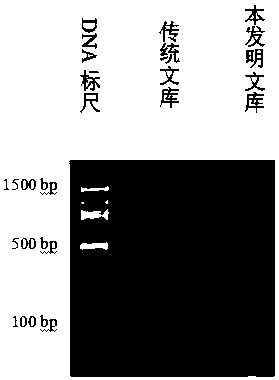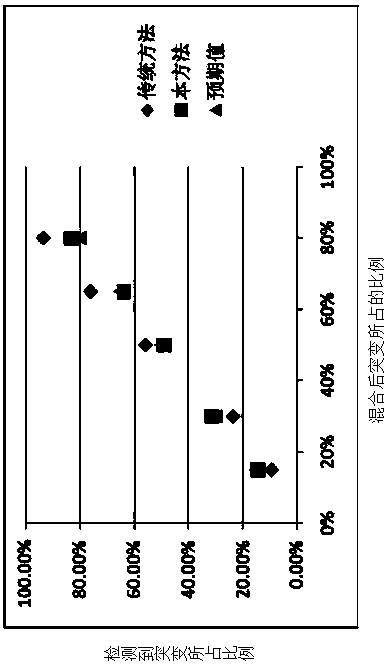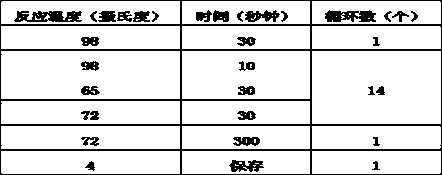Plasma free dna bimolecular labeling, method for labeling and detecting plasma cfdna and its application
A bimolecular and plasma technology, applied in the field of plasma cell-free DNA bimolecular labeling, can solve problems such as inability to accurately judge the test results, and achieve the effects of increasing the amount of effective data, improving accuracy and stability, and reducing false positive rates.
- Summary
- Abstract
- Description
- Claims
- Application Information
AI Technical Summary
Problems solved by technology
Method used
Image
Examples
Embodiment 1
[0085] The plasma cell-free DNA bimolecular marker of this embodiment, its oligonucleotide sequence is as the molecular marker oligonucleotide sequence described in No. 'end, N represents a random base, P represents a phosphate group; the oligonucleotide sequence is artificially synthesized.
[0086] a) 5'P-GACGTC-GATCGGAAGAGCTCGTATGCCGTCTTCTGCTTG
[0087] b) 5'ACACTCTTTCCCTACACGACGCTCTTCCGATCT-NNNNNNNNNNNNNNNNNNNN-GACGTCT
[0088] The process of labeling and detecting plasma cfDNA using the bimolecular marker of this embodiment includes the following steps:
[0089] 1. Plasma preparation
[0090] 1) Use 5-10 ml of anticoagulant and anti-hemolysis-treated blood, centrifuge at 1600g for 5 minutes at 4°C, the blood will be separated after centrifugation, take the top liquid into a new centrifuge tube;
[0091] 2) Centrifuge at 15,000g for 15 minutes at 4°C, take the supernatant into a new centrifuge tube, and the plasma preparation is complete.
[0092] 2. Plasma cfDNA extra...
PUM
 Login to View More
Login to View More Abstract
Description
Claims
Application Information
 Login to View More
Login to View More - R&D
- Intellectual Property
- Life Sciences
- Materials
- Tech Scout
- Unparalleled Data Quality
- Higher Quality Content
- 60% Fewer Hallucinations
Browse by: Latest US Patents, China's latest patents, Technical Efficacy Thesaurus, Application Domain, Technology Topic, Popular Technical Reports.
© 2025 PatSnap. All rights reserved.Legal|Privacy policy|Modern Slavery Act Transparency Statement|Sitemap|About US| Contact US: help@patsnap.com



